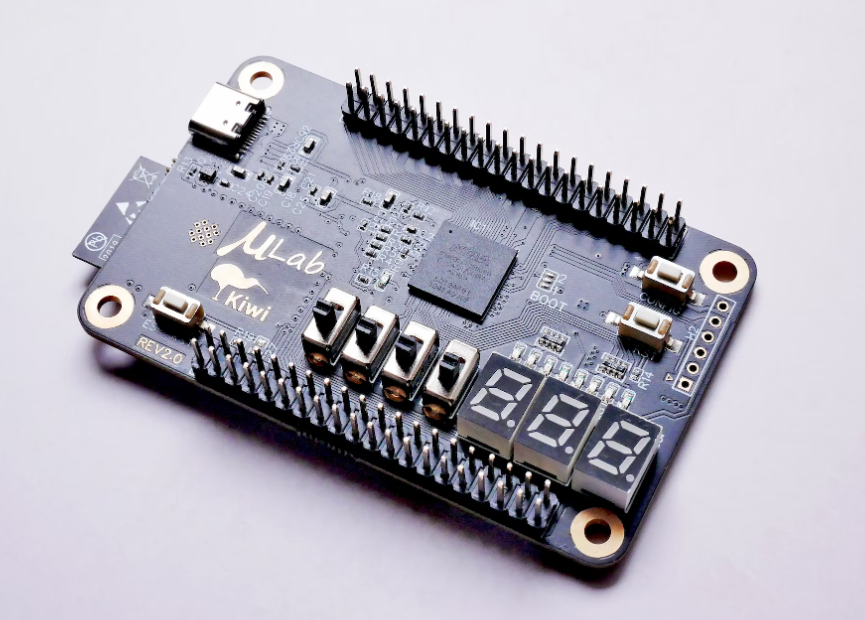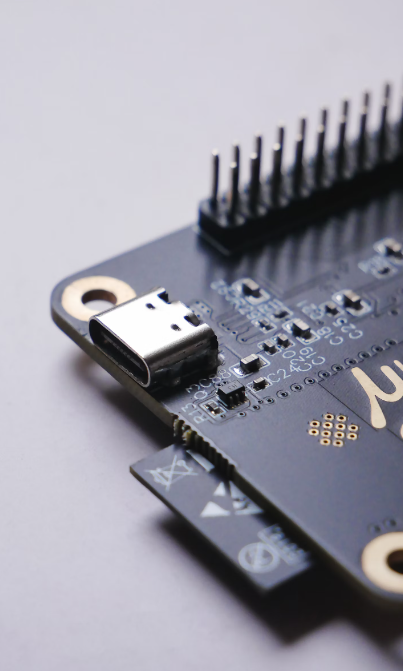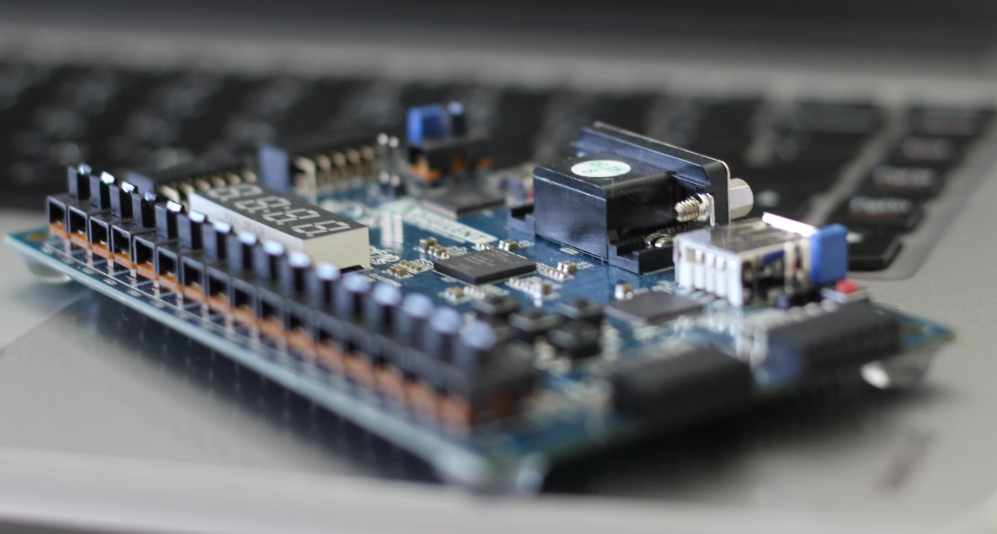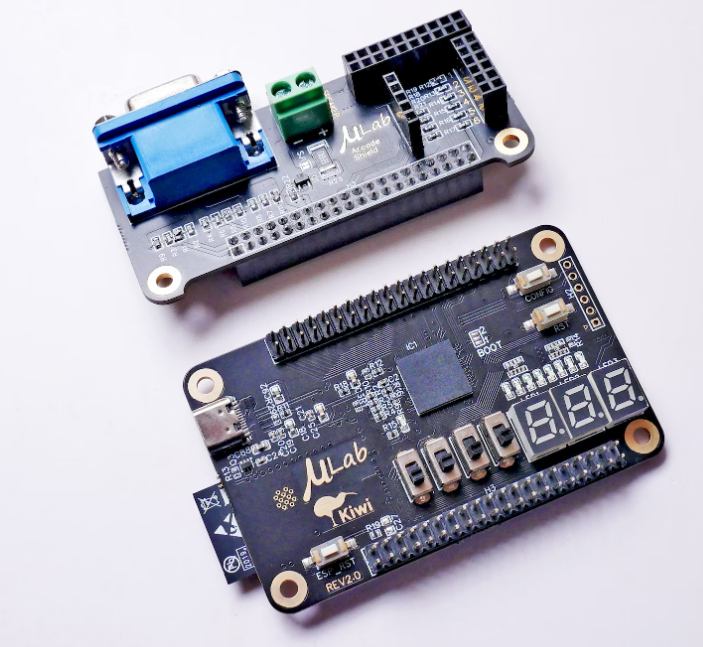gennaio 03, 2024
704
The use of FPGA development boards in systems for engine control and electronic control in automobiles, based on MCU, custom ASIC, and voluminous wire harnesses, has evolved to near its technical and application limits. The automotive industry is now facing new design challenges.

In the past, the development cycle for automotive electronic products was lengthy. However, many car manufacturers are now dedicated to equipping consumers with the next generation of cars in a shorter timeframe. Products like GPS navigation systems and DVD players have relatively short lifecycles, making speed to market crucial.
Adopting ASICs can increase the development cycle by 30 weeks, coupled with a substantial rise in mask costs, escalating expenses and risks further.
Simultaneously, the application of ASICs lacks flexibility due to the introduction of numerous standards and technologies in modern cars. This increases the risk of obsolescence and delayed applications.

Consumers also demand various functional options, forcing car manufacturers to configure based on a set component combination to meet different requirements.
To rapidly achieve these highly integrated and dynamically changing systems, FPGA provides the flexibility needed by automakers. It allows for on-site hardware upgrades without expensive rework and part replacements.
Consequently, FPGA has been applied in various aspects of automotive electronics, from design verification to manufacturing and servicing. As space within cars becomes increasingly precious, the ability of programmable logic to integrate many different functions on a small single-chip solution becomes highly attractive.
Automotive electronic designers, by utilizing FPGA technology with an extended temperature range, significantly enhance their ability to handle various faults.
While many component suppliers employ preventative design techniques and constrained methods to simulate and simulate environmental impacts, certain FPGA architectures still possess inherent advantages in withstanding extended temperature ranges.
For example, Actel's automotive devices based on antifuse technology can withstand the industry's highest node temperature (+150°C), providing greater performance redundancy for designers aiming at high reliability systems.

The ability to operate at high temperatures is not only beneficial for fault tolerance. Since automotive electronic applications have limited space and cost for additional fans and cooling devices, devices must provide the required performance without external heat dissipation.
Extreme environments can often lead to failure modes related to FPGA assembly and packaging, unrelated to the device itself. Therefore, leaving specification margins at various levels of automotive electronic systems is crucial.
FPGA suppliers such as Xilinx and Actel offer products with a wide military temperature range, better defining the coefficient of thermal expansion to avoid the impact of thermal stress.
Even under normal temperature and voltage conditions, repeatedly applying voltage stress to the gate oxide film of an FPGA over time can lead to breakdown of the dielectric insulation layer within the device.
This cumulative breakdown phenomenon, known as Time-Dependent Dielectric Breakdown (TDDB), poses a risk of occurring in the field, especially with the application of deep sub-micron technology.
The challenge is that new processes use high-voltage stress testing for evaluation. While such tests are effective in obtaining statistical predictive data on the lifespan of the oxide film and detecting significant manufacturing and process difficulties, they have limited effectiveness in modeling and predicting early failures of the product, particularly for sporadic faults.
Initial breakdowns can cause severe consequences shortly after the device is put into use.
Identifying and eliminating the causes of these initial breakdown failures is a major challenge. Testing and validating based on TDDB data can yield the true breakdown lifespan limit of the oxide film, but these data are not reliable in determining the lifespan of individual device products.
Even if semiconductor suppliers have methods to identify or eliminate early failures, increasing speculation suggests that the true lifespan of 90nm devices may not be sufficient to meet the requirements of many commercial applications.
If these theories are correct, automotive product designers may have no choice but to specify devices based on more reliable geometric dimensions and processes, forced to abandon the marginal benefits of new generation processes to improve reliability.
Discussing issues related to safety and tamper resistance might seem unusual after understanding the primary physical failure risks of automotive electronic products.
However, any discussion of factors affecting the reliability of automotive systems, without considering the impact of human intervention (intentional or unintentional), is incomplete. It is crucial to confirm that the establishment of automotive safety and reliability begins at the component level.
For instance, if hackers can infiltrate an FPGA-based satellite wireless gateway receiver and disrupt the user's identity authentication mechanism, some unethical users may access services for free. Once the security mechanism of the system is breached, the relevant technology can easily be disseminated to the public.
Various console software for cracking paid services can be easily found by logging into certain websites. From the perspective of car manufacturers, high-risk situations may involve the theft or security systems of automobiles.
Perhaps even more dangerous is the increasing number of people attempting to "tune" car products to enhance performance, a practice that often violates regional or national safety and environmental standards.

This illicit modification activity is offered through various channels and is often challenging to control and combat. Many modifiers recalibrate various conventional settings of vehicular systems and modify fuel delivery, electronic ignition timing, and other control functions to enhance performance.
Of course, these changes may cause cars to operate in violation of manufacturer technical specifications and warranty terms. However, savvy modifiers provide options to revert all modifications, making damaged and overused cars comply with manufacturer warranty terms to seek legal compensation.
To mitigate these security issues, the selection process should start with technology. Industry experts widely agree that antifuse-based architectures are the safest programmable architectures available, as reading the state of devices based on antifuse is extremely challenging.
For example, Actel's 2-million-gate antifuse FPGA contains approximately 53 million antifuses, of which only 2-5% are programmed in typical designs. Therefore, the chance of successfully reading the content of a specific design is minimal, let alone altering its programming state.
Generally, devices based on Flash are also secure. Since there are no physical changes at the semiconductor level for Flash, it is impossible to determine the state of the device through illicit probing. Some vendors even employ access key schemes to further enhance protection.
Actel's new ProASICPLUS series, for example, uses keys ranging from 79 to 263 bits in length. Once protected with a key, the content cannot be read unless the device is unlocked. In contrast, devices based on SRAM require additional configuration devices (typically on-board PROM), which send configuration bitstreams to the SRAM device during power-up.
However, this bitstream is easily intercepted by hackers for copying or direct reading of its content.
In various fields of automotive electronic system development, FPGA has excelled, especially in the domain of racing. In the automotive ECU domain, FPGAs can assist in improving flexibility, performance, and reliability.
Organizations involved in racing activities, such as the electronic design department LifeRacing under Advanced Engine Research Ltd (AER), have started incorporating Actel's Flash-based ProASICPlus FPGA devices in their ECU designs. Competitive racing ECUs require complex tuning algorithms optimized for each independent controller to manage the timing functions of the engine.
Using traditional solutions like standard Timing Processor Units (TPU) controllers, critical software requires significant modification as application demands change.
However, with the In-System Programmability (ISP) feature of Flash-based FPGAs, designers can use a single-chip, on-power FPGA device to replace the traditional TPU controller, reducing software development time, minimizing debugging requirements, and accelerating the overall time to market of the product.
In ECUs, the primary function of an FPGA is typically to extract the engine's position information from the crankshaft and wheel signals. The FPGA issues a CPU interrupt signal based on the abstracted crankshaft angle, rather than the traditional design's tooth position of the wheel, enhancing flexibility and accuracy.
ECUs usually schedule fuel addition and ignition actions as timed events, based on the engine's working conditions derived from scheduled code execution time. Changing the engine's working state before an event can cause angular errors, and the scheduled code is often closely related to the tooth pattern of the crankshaft wheel of the current engine.
FPGAs enable the scheduled code to remain unaffected by signal patterns and allow for event scheduling and continuous adjustment by monitoring the engine's operating conditions until the event occurs.
This enhances code efficiency and flexibility while improving control accuracy under dynamic conditions. Additionally, the Flash-based FPGA's on-power functionality helps designers eliminate additional components traditionally needed to prevent the injection driver or ignition coil driver from starting during power-up.
LifeRacing's proprietary ECU design, F88, successfully applied in the first round of the 2003 Superfund World Series, serves as a significant milestone in entering the Formula 1 racing series.
Commercial road vehicle manufacturers are also considering adopting LifeRacing's ECU. This control unit offers high flexibility, particularly suitable for prototype manufacturing and research environments, capable of handling various engine configurations. FPGAs are gaining widespread acceptance in the design of new-generation automotive electronics.
By thoroughly understanding the unique capabilities of various technologies in the process of selecting FPGAs, automotive designers can benefit from the most promising technologies without compromising the industry's reputation for manufacturing reliable and cost-effective cars.